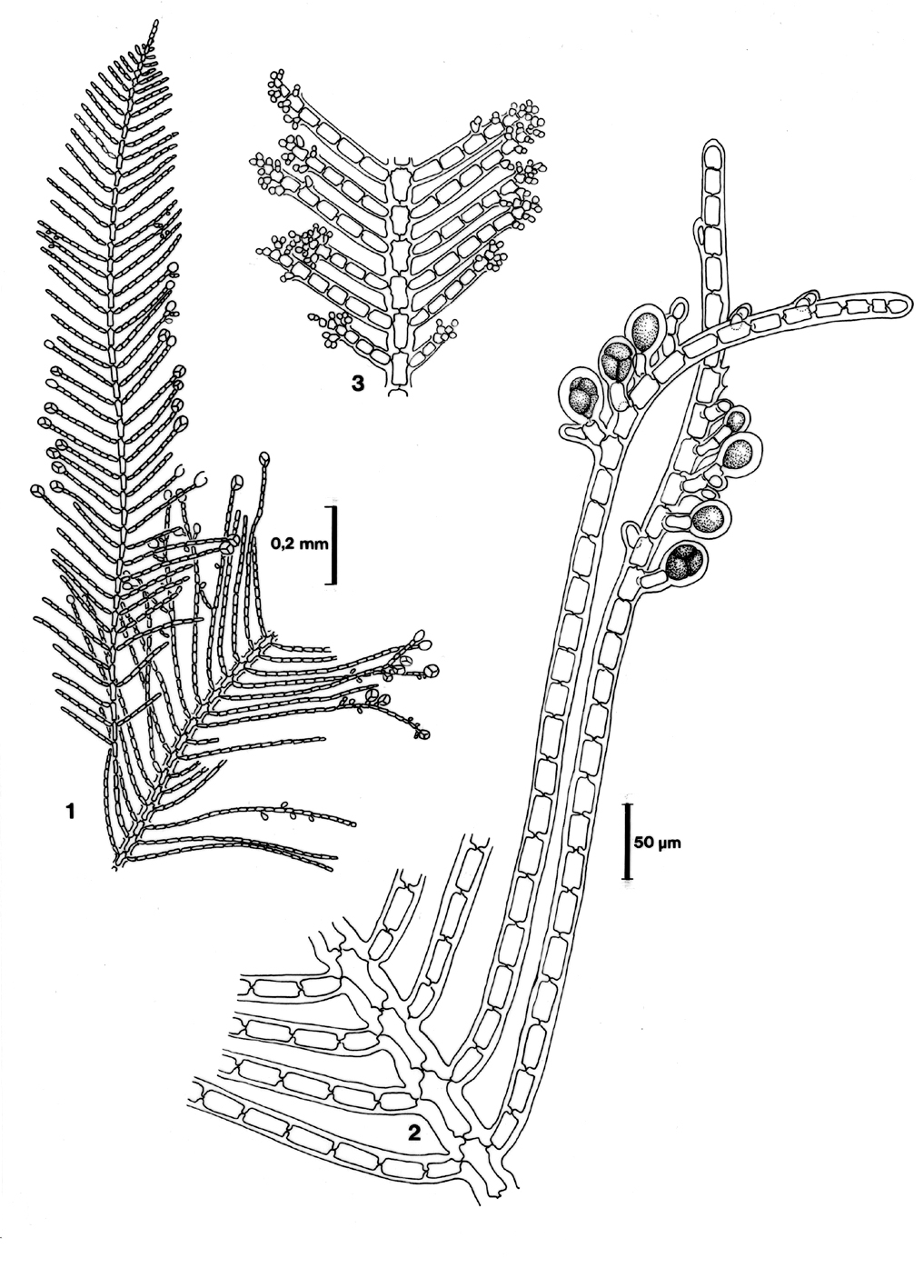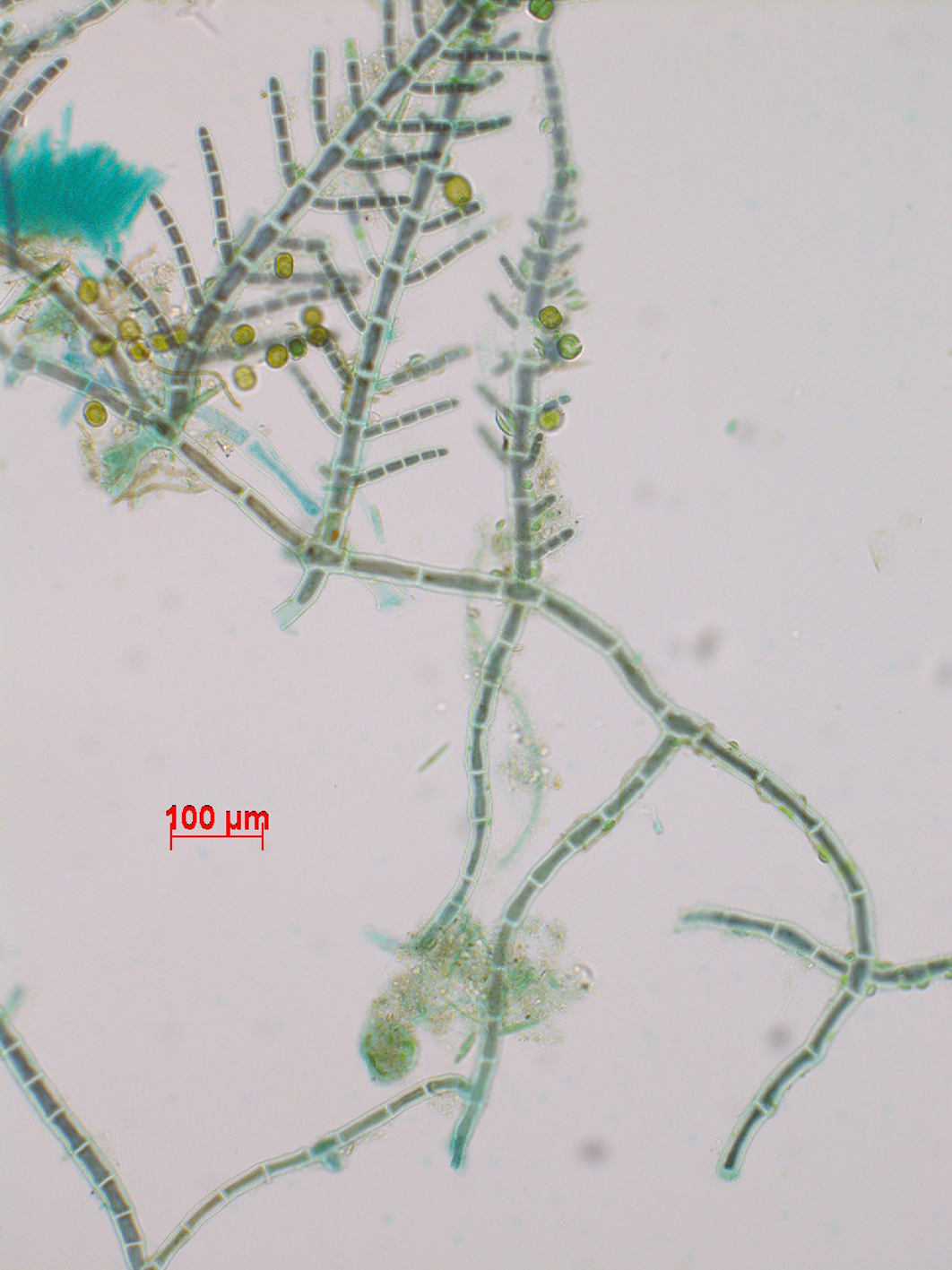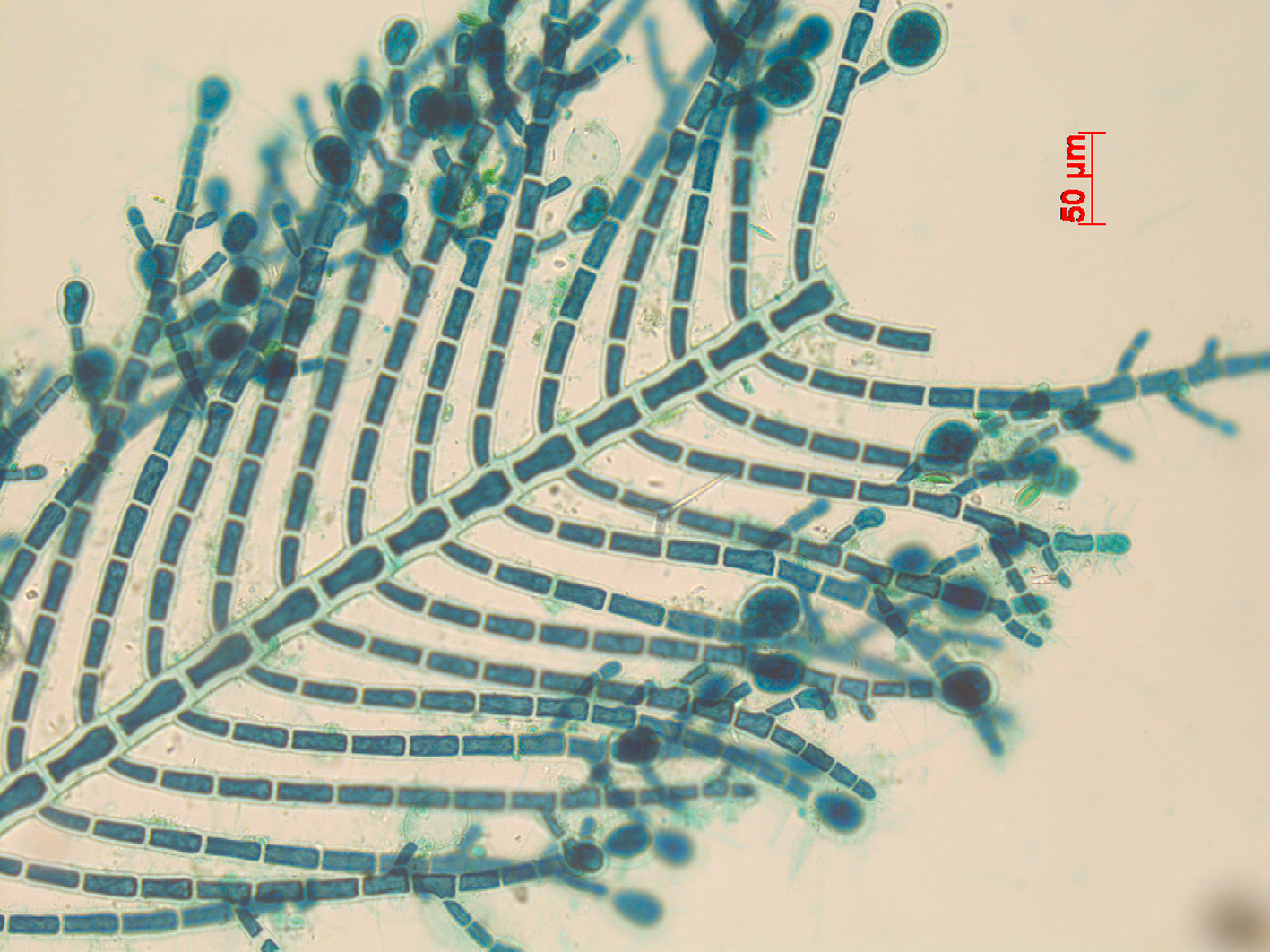Seaweeds of the South African South Coast


Order Ceramiales
Family Wrangeliaceae
Gymnothamnion elegans (Schousboe ex C. Agardh) J. Agardh 1892: 178
Plants clearly differentiated into creeping and erect filaments, the latter up to 5 (-10) mm tall, inserted singly on a short cell of the creeping filament, this cell also producing a multicellular rhizoid. As a rule the short cell of the creeping filament alternates with two (or more) long cells without appendages. Both creeping and erect filaments without cortication, the creeping filaments ca. 25 µm in diameter. Erect filaments with regularly two opposite branches per segment, these all in one plane, often unbranched, sometimes re-branched in the same way, the final ramifications ca. 18 µm in diameter.
Tetrasporangia terminal and (sometimes stalked) subterminal on the final ramifications, measuring ca. 45 x 37 µm, tetrahedrally divided. Male stands in similar positions as tetrasporangia, consisting usually of a basal cell, about three spermatiferous cells and relatively few spermatangia. Female structures not seen on south coast material: according to west coast material “female fertile filaments appearing in the form of little-reduced branchlets of the erect axes, one to several cells bearing procarps” (Stegenga et al. 1997).
Collections, ecology and regional distribution
Recorded from the Cape Peninsula to Mission Rocks/Cape Vidal (16-56), although on the south coast we have not found it east of East London (Bat’s Cave). It is usually found in the upper eulittoral zone, where it grows inside clumps of Bostrychia intricata.
World distribution: Distributed worldwide in tropical to warm temperate areas.
Type locality: Tangiers, Morocco (Silva et al. 1996).

Gymnothamnion elegans. 1 Microscopic habit. 2 detail with tetrasporangia. 3 Spermatangia. Reproduced from Stegenga et al. (1997).

Gymnothamnion elegans. Creeping axis with erect axes. Stained slide material, Still Bay.

Gymnothamnion elegans. Tetrasporangial thallus. Stained slide material, Still Bay.
References Gymnothamnion elegans
Agardh, J.G. 1892. Analecta algologica. Acta Universitatis Lundensis 28(6): 1-182, 3 pls.
Silva, P.C., Basson, P.W. & Moe, R.L. 1996. Catalogue of the benthic marine algae of the Indian Ocean. University of California Publications in Botany 79: 1-1259.
Stegenga, H., Bolton, J.J. & R. J. Anderson. 1997. Seaweeds of the South African west coast. Contributions from the Bolus Herbarium 18: 655 pp.
Cite this record as:
Anderson RJ, Stegenga H, Bolton JJ. 2016. Seaweeds of the South African South Coast.
World Wide Web electronic publication, University of Cape Town, http://southafrseaweeds.uct.ac.za; Accessed on 25 December 2025.